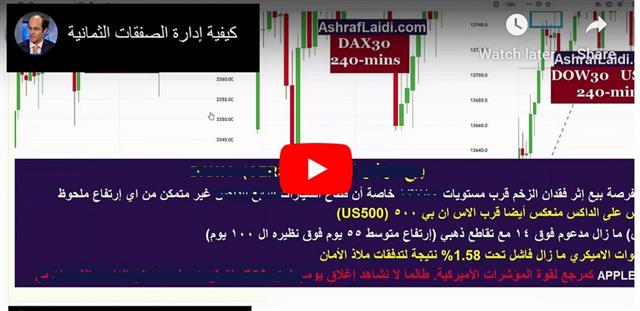Is Yen-Centric Risk Back?
The yen plunge of the past two days threatens to re-write the rules of trading JPY. We look at the move and the disjointed risk picture it unravels. Indices are tumbling across the board after high profile failure to follow-through the highs, while gold rises to its highest level relative to S&P500 in 2 weeks. Take a look at the historical GOLD vs YEN chart below. Ashraf asked imagine how low would the S&P500 be today if ETrade did not rise 24% as a result of Morgan Stanley's aquisition of the online broker.
كيفية إدارة الصفقات الثمانية فيديو للمشتركين
The playbook in yen trading for a generation has been to largely ignore Japanese fundamentals because ultra-low rates even in relatively good times cemented its status as a funding currency. In addition, huge Japanese overseas investments and the tendency to bring them home in times of global uncertainty solidified it as a safe haven currency.

Is that dual axis breaking down? It's far too early to draw any conclusions but the latest drop in the yen is undoubtedly country-specific. There is some element of risk appetite in play but gold is at 7-year highs and Treasury yields remain a hiccup away from yearly lows.
What changed is a brutal GDP report at the start of the week. The 6.3% annualized drop is breathtaking and while a 3.8% fall because of the sales tax hike was anticipated, that's a much bigger decline. Without annualizing, it's a 1.6% q/q decline, wiping out all the growth since mid-2017. It was followed up Wednesday by a poor machine tool orders report and the yen breakdown began shortly afterwards.
The message of the market might be twofold:
1) That the BOJ will have to reach deeper into experimental policy. They've already crossed many previously-unthinkable thresholds and every step further risks an dramatic loss of confidence in the currency;
2) The sharp drop in growth in Q3 shows that consumers and the economy can't withstand a tax hike and that raises this risks of an accelerating debt spiral and loss of confidence;
3) Coronavirus is now a consideration. Certainly Japan is at a higher risk of an immediate outbreak than the US or Europe but if it travels regionally next, it almost-certainly ensures it will be a global pandemic in weeks or months so the time mismatch shouldn't matter. Some say Japan was betting heavily on the summer' Olympics. Would the virus cause visitors to stay away from the Land of the Rising Sun?
4) The yen is no longer the only funder. It's not a coincidence that this takes place as the euro and Eurozone yields continue to fall. In many ways – particularly on the deficit side and monetary policy side – the euro makes for a better funding currency. This is something we have been highlighting for months and will be exploring more in the weeks ahead.
Again, we have to emphasize that it's far to early to anticipate any kind of structural shift in the FX market. A number of factors are in play including technical breaks and a squeeze above 110.00 in USD/JPY and a breakout from unusually low volatility. A change in regimes isn't going to happen overnight, but we're watching closely.
Latest IMTs
-
Why I Bought Gold & Silver
by Ashraf Laidi | Jan 9, 2026 16:53
-
Beware of US Supreme Court Ruling on Tariffs
by Ashraf Laidi | Jan 8, 2026 19:38
-
Falling to 11 Percent
by Ashraf Laidi | Jan 7, 2026 20:28
-
Dollar Cannot Wait for Q1 to End
by Ashraf Laidi | Jan 6, 2026 12:40
-
Silver's Signal to Gold Full Explanation
by Ashraf Laidi | Dec 30, 2025 20:04










